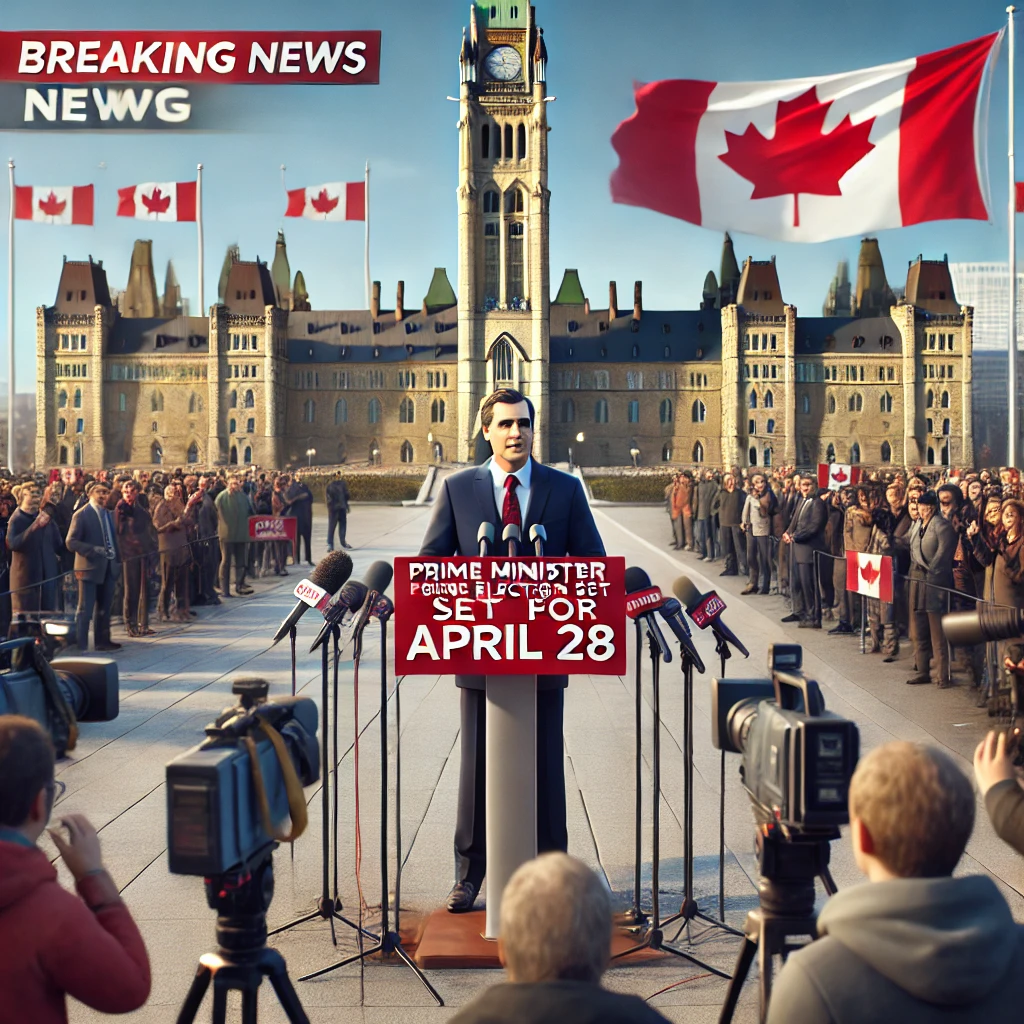Canadians will head to the polls on April 28, following Prime Minister Mark Carney’s formal request to Governor General Mary Simon to dissolve the 44th Parliament, triggering a spring federal election and bringing an end to the longest-running minority government in Canadian history.
Carney made the visit on Sunday, just one day before Parliament was due to resume after former Prime Minister Justin Trudeau prorogued it back in January. Under the Elections Act, April 28 is the earliest legally permissible election date, exceeding the minimum campaign length by just one day.
Where Parliament Stood Before the Drop
At dissolution, the House of Commons was divided as follows:
-
Liberals: 153 seats
-
Conservatives: 120 seats
-
Bloc Québécois: 33 seats
-
NDP: 24 seats
-
Green Party: 2 seats
-
Independents: 3 seats
Carney was officially elected Liberal leader on March 9 and sworn in as Prime Minister on March 14, succeeding Trudeau. Just days later, he now begins his first campaign as leader of the party.
Carney to Run in Nepean
The Liberals confirmed that Carney will seek election in Nepean, an Ottawa-area riding currently held by Chandra Arya, who has now been dropped as the Liberal nominee after being informed his candidacy for the party leadership would not be accepted earlier this year.
Nepean lies just next to Carleton, the riding of Conservative Leader Pierre Poilievre, setting the stage for a high-stakes geographic rivalry.
Campaign Launches and Party Pitches
Carney kicked off his campaign by unveiling a middle-class tax cut, vowing to lower the marginal tax rate on the lowest tax bracket by one percentage point. According to the Liberals, the move would benefit 22 million Canadians, saving two-income households up to $825 per year.
Framing the election as a choice between “solutions or slogans,” Carney took a swipe at Poilievre, saying, “I solve problems, I don’t just point them out.” He emphasized the need for strong leadership to face economic threats from the U.S., particularly under President Donald Trump, whose protectionist stance and trade tactics are expected to feature prominently in this campaign.
“There is so much more to do to secure Canada, to invest in Canada, to build Canada, to unite Canada,” Carney said. “That’s why I’m asking for a strong, positive mandate from my fellow Canadians.”
Meanwhile, Poilievre launched his campaign from Gatineau, Quebec, directly across from Parliament Hill. He promised to “restore the promise of Canada” by tackling the cost of living, fixing immigration, and strengthening the military.
“Our nation is more divided than ever before because the Liberal, radical, post-national, borderless and globalist ideology has weakened our nation,” Poilievre said, characterizing Carney as Trudeau’s “handpicked successor.”
In downtown Ottawa, NDP Leader Jagmeet Singh reiterated his party’s wins in securing national dental and pharmacare programs through cooperation with the Liberals. But Singh argued that neither of the front-running parties will defend Canadians’ economic interests against Trump’s “illegal trade war.”
“Who will stand up and say no when Donald Trump comes demanding concessions?” Singh asked. “We fight for working people—the ones who earn their living by showing up, who dream of owning a home and retiring with dignity.”
The Green Party launched its campaign from Montreal, with co-leader Elizabeth May pledging her party’s unwavering commitment to science and climate action, criticizing the Liberals’ recent suspension of the carbon levy.
“We don’t check the wind of public opinion. We stand with science and with the planet,” said May.
At 34, Jonathan Pedneault, May’s co-leader, will be the public face of the Greens throughout the campaign and will represent the party in leaders’ debates.
What’s at Stake?
This election comes at a moment of renewed strength for the Liberals, who have overtaken the Conservatives in multiple polls for the first time since 2022. With economic anxieties mounting, especially regarding Trump’s return to the U.S. presidency, Canadians are being asked not just to choose a government—but to select a leader capable of standing up to America’s shifting posture.
Trade. Jobs. National unity. Climate. Leadership.
Canadians head to the polls April 28, with more than just domestic policies on the ballot. The question looming over this campaign is clear: Who will lead Canada through uncertain times—at home and on the global stage?



